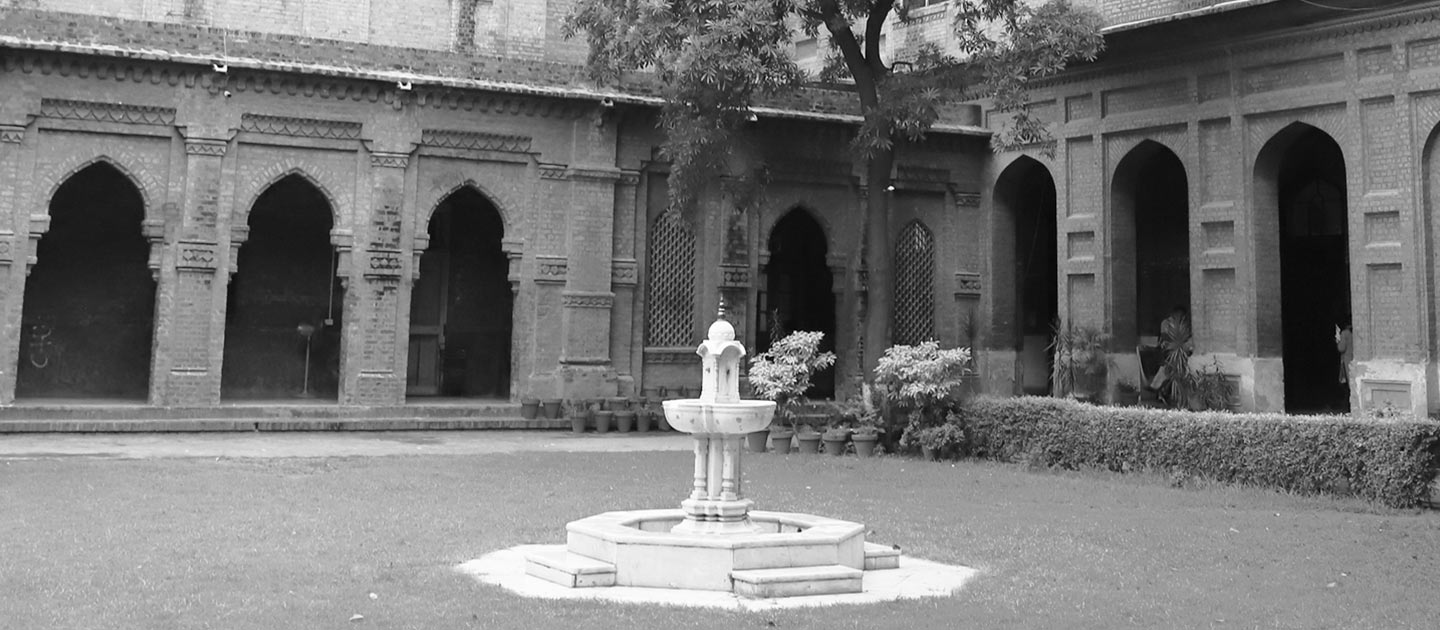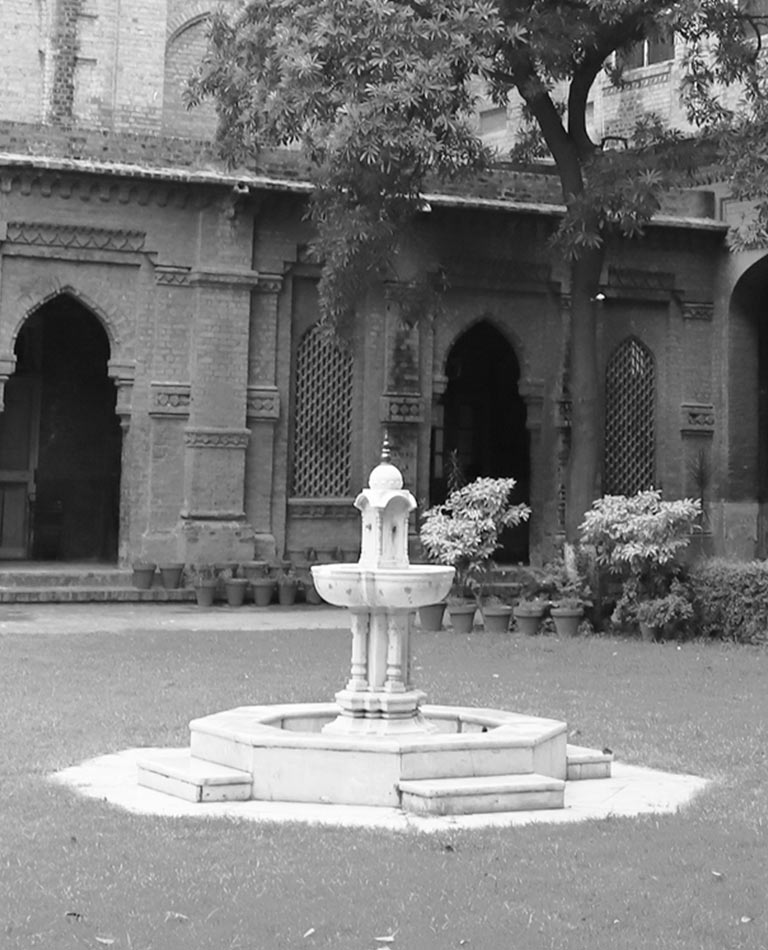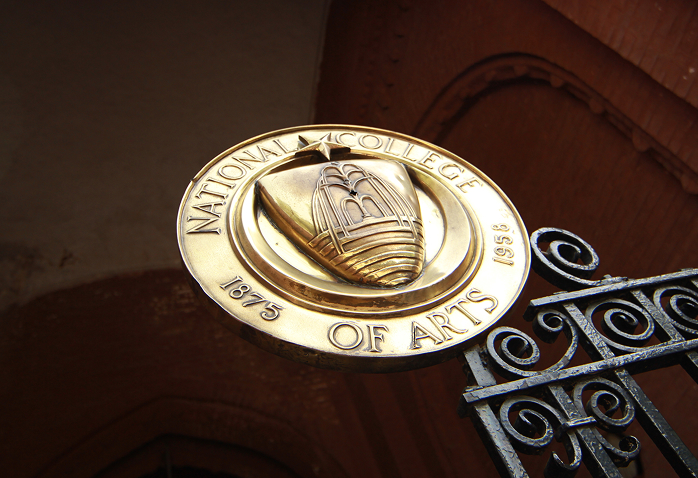




As we enter the historic National College of Arts (NCA) on The Mall, Lahore, we find the epigram, Kasb-e-Kamal Kun Keh Aziz e Jahan Shavi imprinted at the entrance.
From the myriads of human creations possible, Kasb means work of the hand - working through and with the hand.
Over generations, the NCA has borne and carried forth a deep commitment to Kasb. Kasb-e-Kamal Kun Keh Aziz e Jahan Shavi – the poetic aphorism is a romance with memory and being remembered. It is a reminder that you will be remembered with admiration, fondness, and endearment for what matures through your hand.
You will be loved for time immemorial for your Kasb.

The NCA Triennale 2025 is rooted in the National College of Arts’ historic motto, Kasb-e-Kamal Kun; Keh Aziz-e-Jahan Shavi, (seek excellence in your work, so you may be admired by the world) – a mastery of the working hand that transcends limits of the priorly known, familiar creative bounds and cerebral constructs.
The first edition of The NCA Triennale serves as the first of its kind initiative to unpack gaps and explore crossovers between traditional craftsmanship and contemporary art practices. In a world growingly driven by artificial intelligence and ever-evolving technological possibilities, The NCA Triennale’s exhibitions seek to highlight the lasting significance of artisanal traditions while advancing approaches to their interpretation. Additionally, the inaugural Triennale will bring together local and international artists, inviting them to create new projects that resonate across the themes of heritage, contemporary art, technology- inviting fresh ways to reimagine the future of craftsmanship.
Craft, in the context of The NCA Triennale 2025 is not restricted to the narrow, familiar traps that rigidly dichotomize art and craft as distinct, even antithetical entities. Instead, we aim to direct our attention towards making processes, not merely as a set of interdependent physical and operational methods but as an alchemy of psychological, experiential, social, cultural – even physiological processes ensuing from one another.
The comprehension, discourse, and praxis of objects, materials, and artefacts catalogued as art are oft-times circuitous, accessible only to private, somewhat unshared realms and circles, that are exclusionary of organically developing shades of societal meanings. Our intention is not to nativize, exoticize, or localize craft into a separate communal activity estranged from art, often viewed from a patronizing vantage point. Instead, we attempt to acknowledge that craft and art are a continuum.
It is the visceral memory of the hand, the contour where art and craft meld in a subtle gradient that finesse becomes seamless, culminating into an expression that is no longer tied to any particular -ism, yet affords a largeness of meaning.
Retelling everyday practices of making
Preserving material culture within the context of “the broader conceptualizations of craft”
Craft-oriented histories of travel and migration
The branding and marketing of traditional cultural expressions
Phenomena referred to as the ‘poetics of the handmade’
The inner processuality of craft - making as a method of autobiographical inquiry
Practices of resilience and protest through handiwork
Collectivizing of sentiment through patterns reminiscent of resilience – what do you do when the only memory you have left of your collective self is a visually intricate pattern?
Craft not merely as a cultural phenomenon that is attended by the anxieties, hopes, failures, and insights that make (it) worthy of study – but also as a living and dynamic set of practices continually in discourse with the wider world around them
Poetry/Indigenous Verse/Writerly Speculation as an idiom for modern craft
Multiple geographies and historical periods when craft was consciously conceived of/framed as opposed to mass-produced, mass-disseminated, and mass-circulated objects
Multivocality and animating the cultural space of the city in relation to processes of making
We invite applications from individuals and collectives across diverse creative disciplines, including but not limited to visual arts, design, architecture, music, film, theatre, and traditional art and craft practices.
Those engaged in interdisciplinary or experimental approaches are also encouraged to apply.
Aspiring participants must have showcased their works/projects, creating engagement within the public domain.
Proposal *- 500 to 1000 words followed by visual and/or audio-visual representation of work – comprising any of the following: High-Res Artwork Images, Photographs, Illustrations, Animations, Prototypes, Sketches, Diagrams, Videos etc.
Specifics such as space and equipment requisites, along with technical requirements for light and sound, and any other particulars, such as those for site-specific installations must be mentioned beforehand.
Proposal Submission: June 10, 2025 – Status email will be sent within two weeks of proposal submission.
Participants may consider the following set of questions, as and where relevant while framing their proposals for The NCA Triennale 2025.
Briefly describe your artistic practice and how it aligns with the theme of this Triennale. How does your work challenge or blur the boundaries between art and craft? Consider the following: In what ways does your practice engage with the idea of Kasb-e-Kamal (the pursuit of excellence through skill)? What message or experience do you hope to convey through your work?
Can you discuss a moment in your practice where technical mastery led to new conceptual insights? How do you perceive the role of the “hand” in contemporary artistic production?
What materials, techniques, or technologies will you use for this project? Can you describe how you experiment with materials, techniques, or forms in your creative process?
Does your practice engage with memory, folklore, or material culture? If so, in what ways?
How do you see craft evolving in contemporary art/art-historical discourse? You may choose to answer this with special attention to the realities of artistic practice within a postcolonial South Asian context.
How does your project challenge conventional artistic boundaries or narratives? What role does interdisciplinarity play in your work?
How does your work respond to contemporary social, cultural, or political issues?
What is your perspective on making art more inclusive and public spaces accessible beyond academic and elite spaces?
How does your work respond to the urban and cultural landscape of Lahore (or your own city)?
Please specify if you have worked on similar large-scale exhibitions before? If so, what were the challenges you faced?
Do you have prior experience managing logistics (installation, transportation, budget, etc.) for exhibitions?
Are you open to collaboration with other artists or curators during the Triennale?
References: